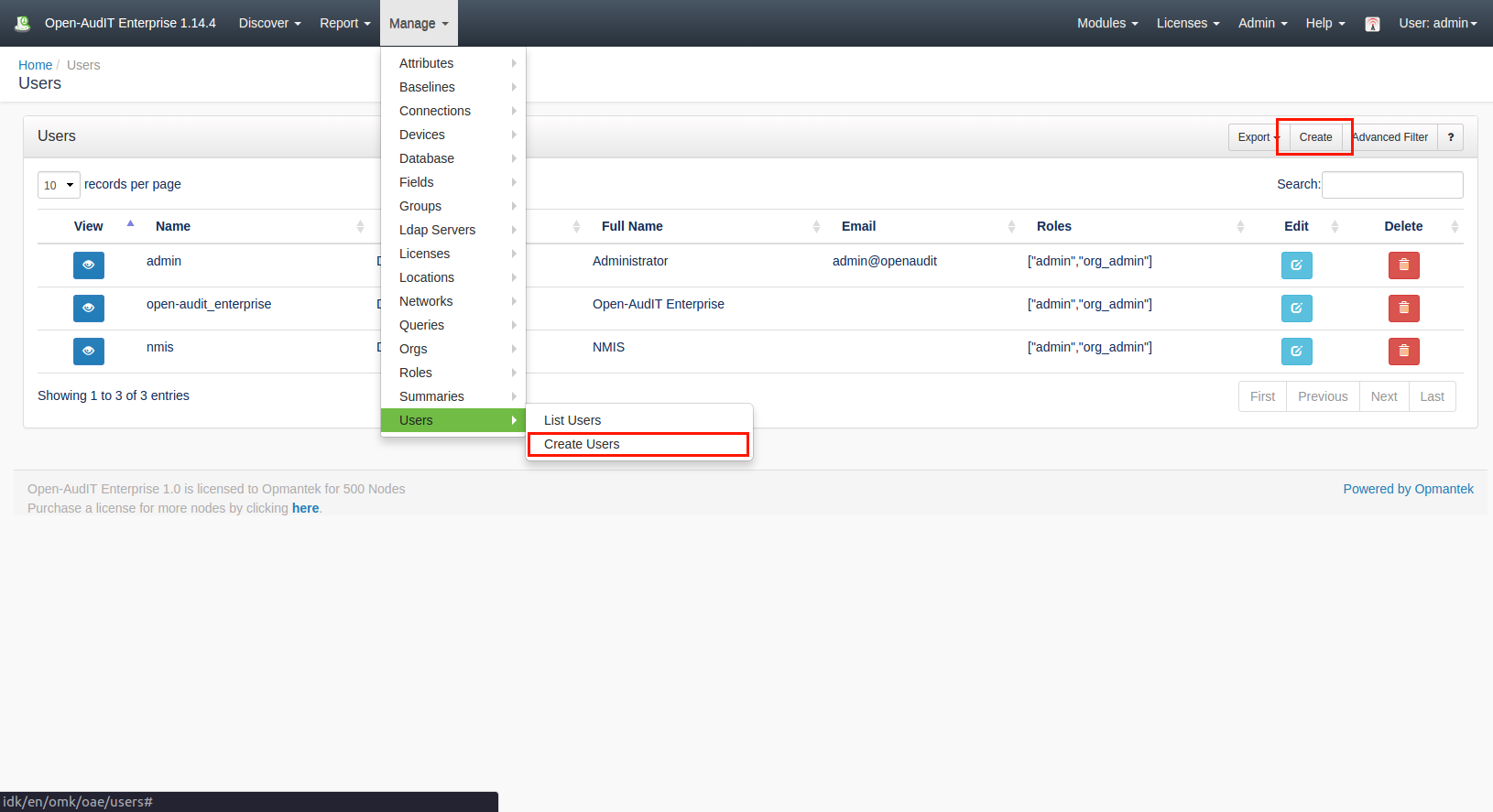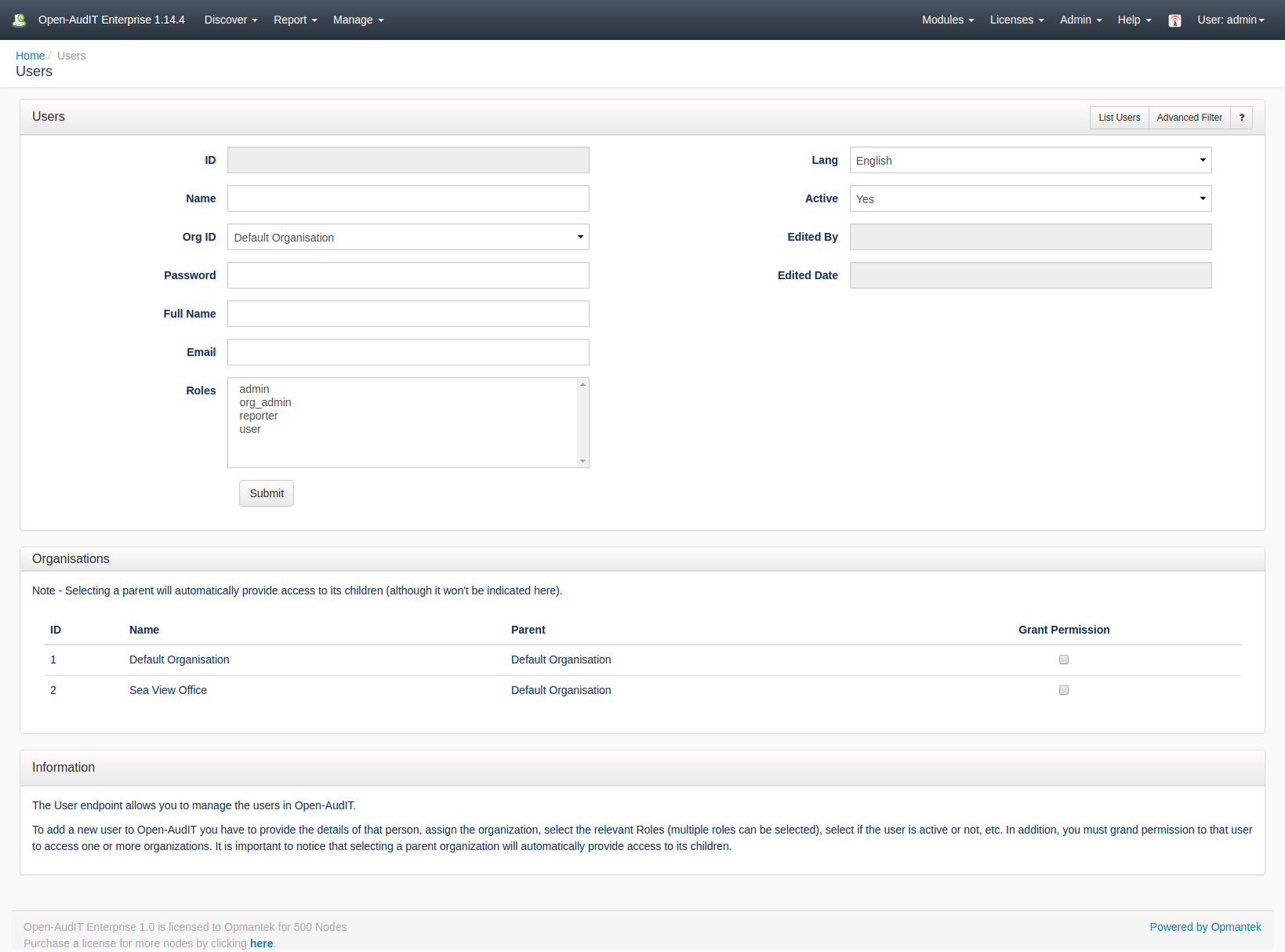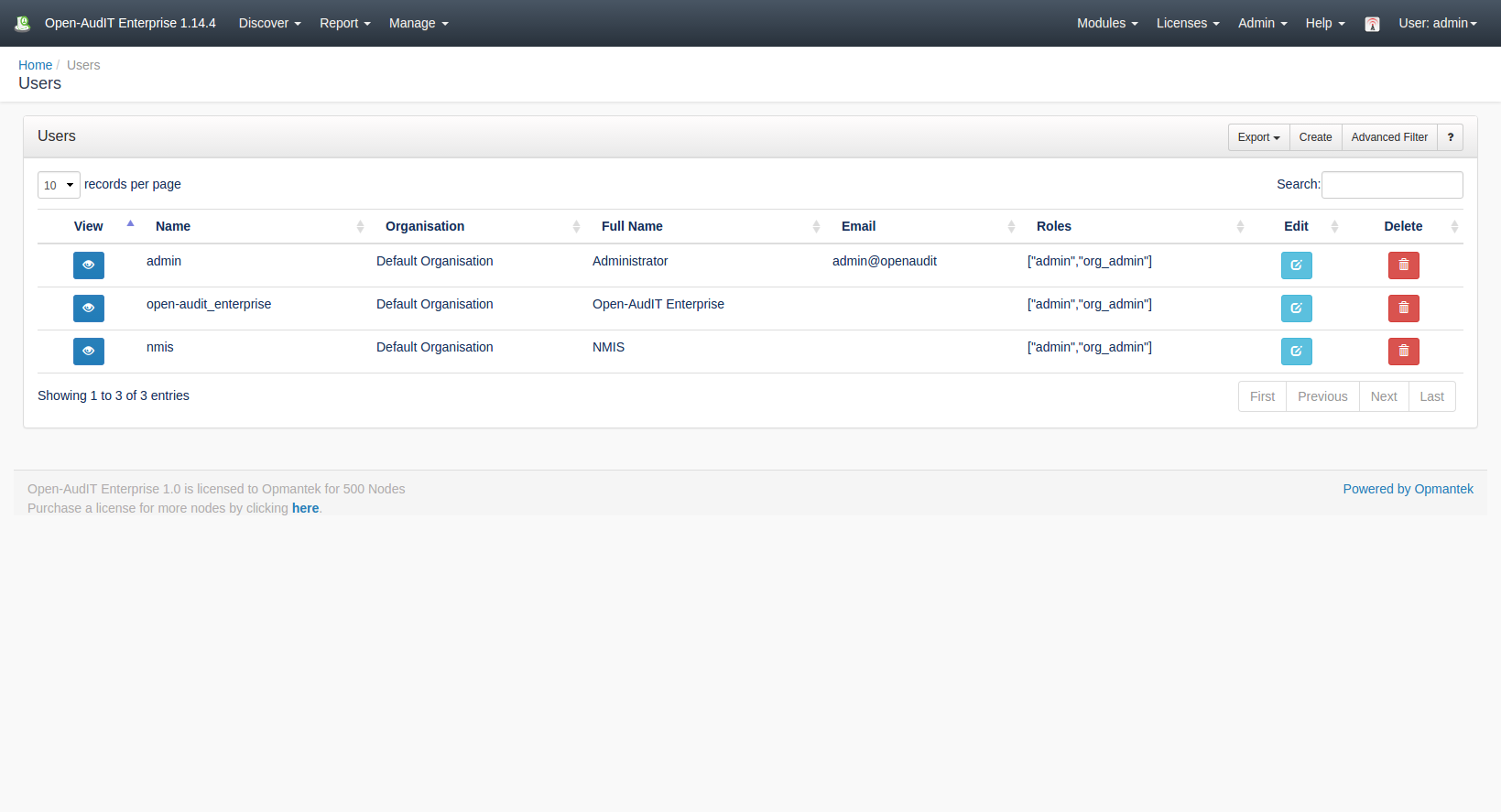Introduction
The User endpoint allows you to manage user accounts within Open-AudIT.
How Does it Works?
A user has a primary Org as well as a list of Orgs they can access. A user combines this with a list of assigned 'Roles' that define what actions they can take on items assigned to the Orgs they have access to. The combination of a users 'orgs' and 'roles' define what they can and cannot do within Open-AudIT.
Creating a User Entry
A user entry can be created using the web interface if the current user logged in has a role that contains the user::create permission. Go to menu: Manage -> Users -> Create Users. Also can be created from the Users View, using the "Create" button.
To add a new user to Open-AudIT you have to provide the details of that person, assign the organization, select the relevant Roles (multiple roles can be selected), select if the user is active or not, etc. In addition, you must grand permission to that user to access one or more organisations. It is important to notice that selecting a parent organization will automatically provide access to its children.
View Users Details
Go to menu: Manage-> Users -> List Users.
Database Schema
The schema for the database is below. It can also be found in the application if the user has database::read permission by going to menu: Manage -> Database -> List, then clicking on the "users" table.
CREATE TABLE `roles` ( `id` int(10) unsigned NOT NULL AUTO_INCREMENT, `name` varchar(200) NOT NULL DEFAULT '', `description` text NOT NULL, `permissions` text NOT NULL, `ad_group` varchar(100) NOT NULL DEFAULT '', `edited_by` varchar(200) NOT NULL DEFAULT '', `edited_date` datetime NOT NULL DEFAULT '2000-01-01 00:00:00', PRIMARY KEY (`id`) ) ENGINE=InnoDB AUTO_INCREMENT=7 DEFAULT CHARSET=utf8;
A typical entry looks as below.
id: 1
name: admin
org_id: 1
password: 0ab0a153e0bb0d80c50a02d08c07f0c87080eb0502f5057d30e308d204408c8068e9f4075c0eb61056107b050dd30090650b20b02109230b210be540903ca0b6
full_name: Administrator
email: admin@openaudit
roles: ["admin","org_admin"]
orgs: [1]
lang: en
active: y
ldap:
edited_by: Administrator
edited_date: 2017-05-31 21:40:59
API / Web Access
You can access the /users collection using the normal Open-AudIT JSON based API. Just like any other collection. Please see the API documentation for further details.
Access is provided as part of a roles permissions. Users is a standard resource and can have create, read, update and delete permissions.
The API routes below are usable from both a JSON Restful API and the web interface. The Web application routes are specifically designed to be called from the web interface (a browser).
API Routes
Request Method | ID | Action | Resulting Function | Permission Required | URL Example | Notes | Example Response |
|---|---|---|---|---|---|---|---|
| POST | n | create | users::create | /users | Insert a new user entry. | users_create.json | |
| GET | y | read | users::read | /users/{id} | Returns a user details. | users_read.json | |
| PATCH | y | update | users::update | /users/{id} | Update an attribute of a user entry. | users_update.json | |
| DELETE | y | delete | users::delete | /users/{id} | Delete a user entry. | users_delete.json | |
| GET | n | collection | users::read | /users | Returns a list of users. | users_collection.json |
Web Application Routes
Request Method | ID | Action | Resulting Function | Permission Required | URL Example | Notes |
|---|---|---|---|---|---|---|
| GET | n | create | create_form | users::create | /users/create | Displays a standard web form for submission to POST /users. |
| GET | y | update | update_form | users::update | /users/{id}/update | Show the user details with the option to update attributes using PATCH to /users/{id} |


